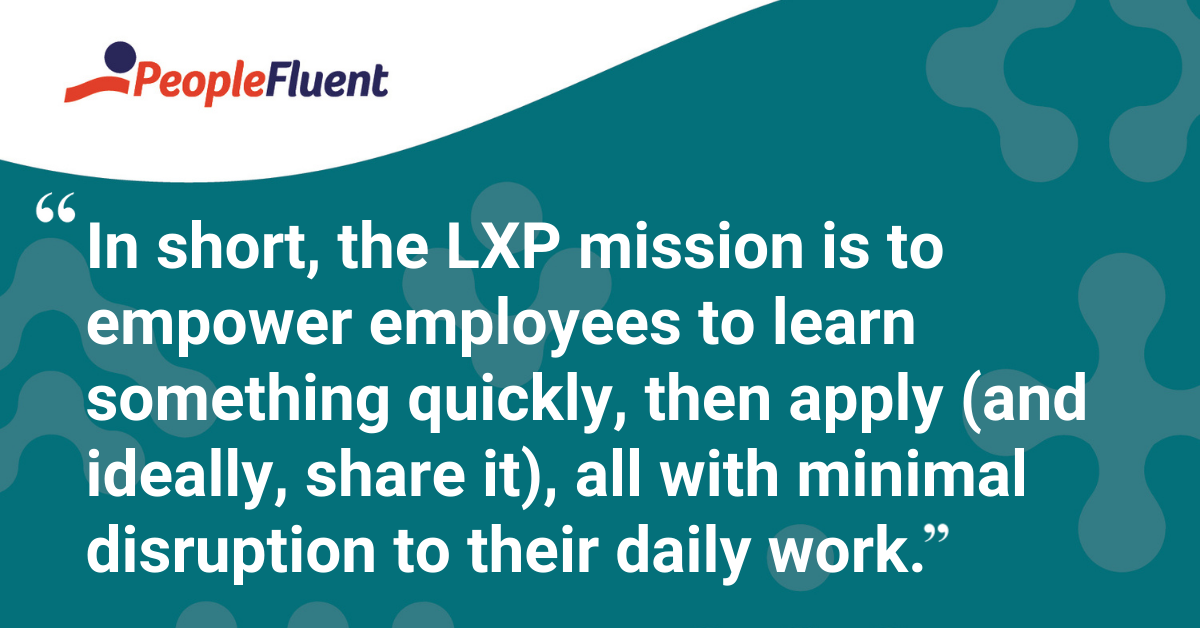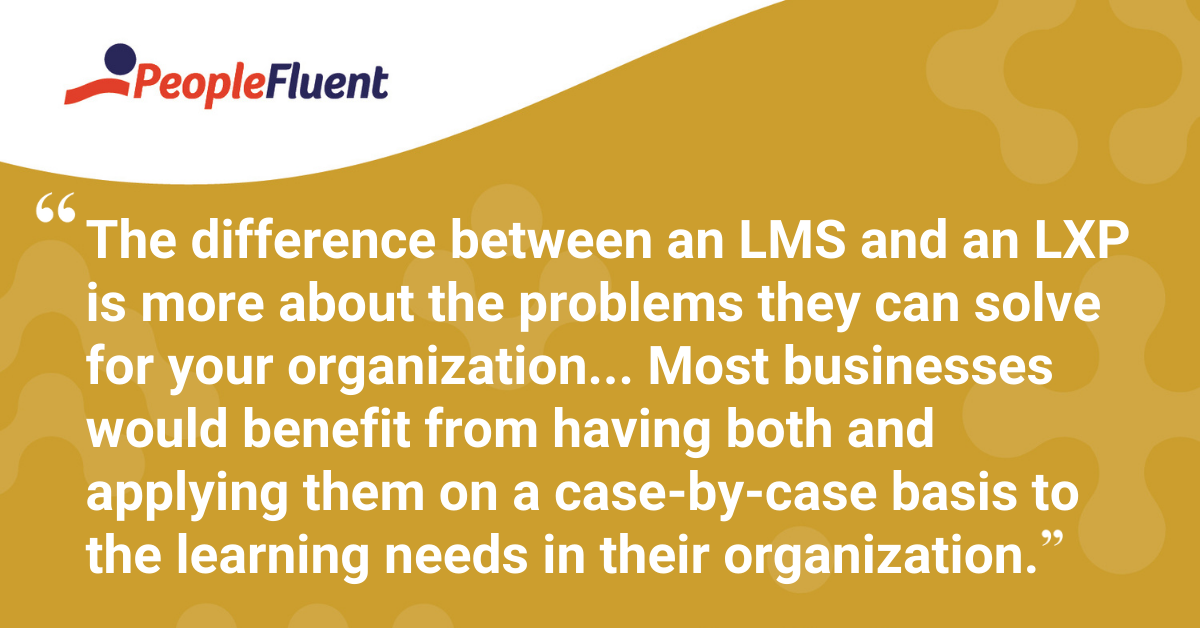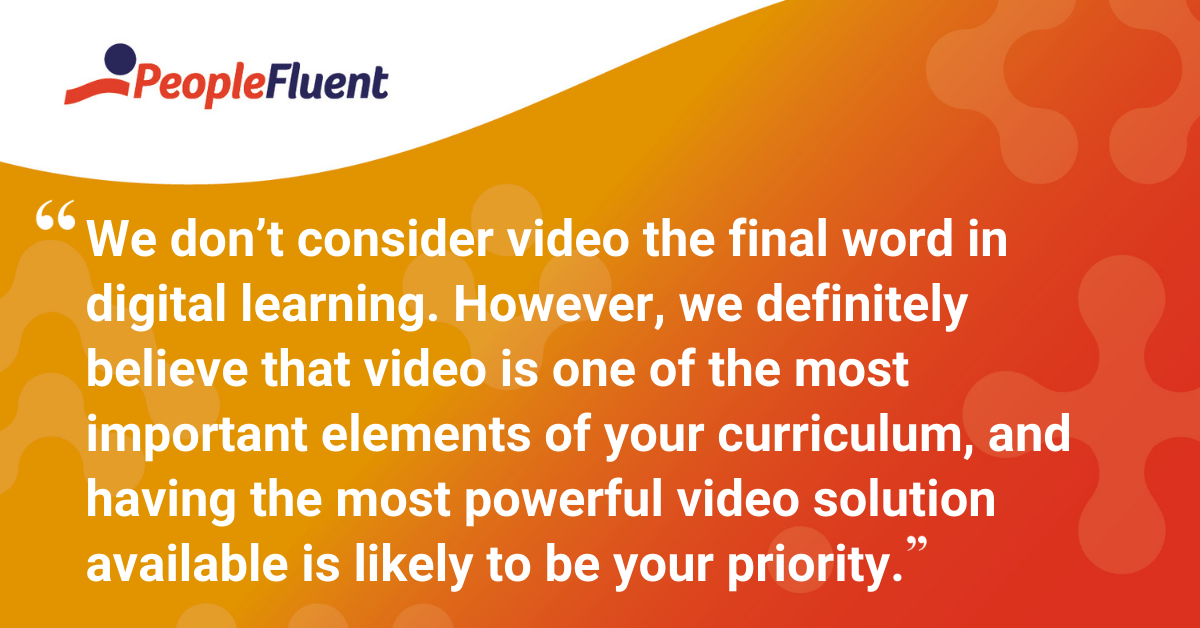Published: Oct 15, 2020Time to read: 10mins Category: Learning
Everything You Wanted to Know About LXPs (But Were Too Afraid to Ask)
Now that LXPs are here, do we still need LMSs? Why are some LXPs on the market so different from others? Should we even be calling these platforms LXPs? We answer all these questions and more to help you better understand the current learning experience platform market, and why (and whether) you would ever need one.
What Is a Learning Experience Platform (LXP)?
Learning experience platforms create personalized learning experiences by pulling together both formal and informal learning materials from across an organization—and beyond—for the purpose of self-paced learning.
The goal of platforms labeled as “LXPs” (or more rarely an “LEP” or “LEXP”) is to provide a single point of access for all digital learning material. The term “LXP” was first coined by L&D industry commentator Josh Bersin to describe a new wave of learning platforms focused on bringing together all digital learning in this way.

These platforms acknowledge that a great deal of workplace learning happens outside of the carefully constructed course content delivered in a learning management system. For example, learning could happen via a quick Google search that leads to a YouTube video. Or a discussion in a team messaging group.
By building search, recommendation, tracking, hosting, and social elements into a single learning environment, L&D teams with an LXP can curate and aggregate great content from a range of sources. They can then offer it seamlessly alongside the content they create. In short, the LXP mission is to empower employees to learn something quickly, then apply (and ideally, share it), all with minimal disruption to their daily work.
Also on the blog: ‘3 Ways to Align Your Learning Technology Ecosystem to Your Learning Strategy’
Do All Learning Experience Platforms Have the Same Focus?
In a 2018 blog post returning to the subject, Josh Bersin suggested seven key capabilities for an LXP:
- They present content in a “Netflix-like” interface, with recommendations, panels, mobile interfaces, and AI-driven recommendations.
- They accommodate any form of content, including articles, podcasts, blogs, microlearning, videos, and courses.
- They are social, and include social profiles which connect content to people to create authority.
- They have paths or learning track [sic] or trails so you can follow content to a logical learning outcome.
- They have some form of assessment and often badging or certification.
- They make it easy to publish your own content as an individual.
- They are mobile, fun to use, fast and easy to traverse and have great search and embedded learning features.
Bersin went on to acknowledge that the emphasis of individual LXPs varies greatly. Even among the seven “key capabilities”, you’ll find some that are less emphasized or absent in LXPs currently on the market. Assessment, badging, and certification are not currently a part of Instilled by PeopleFluent’s key feature-set, for example. On the other hand, elements such as video and user-generated content are more prominent in how we talk about the platform than you may find with our competitors (see ‘What Kind of Learning Experience Platform is Instilled By PeopleFluent?’ below for more information)
This looseness isn’t a massive surprise—the term “learning experience” could, after all, describe a wide range of scenarios in which learning is involved. The lack of consensus has led some to question whether “LXP” is sufficiently recognizable and descriptive as a term: Craig Weiss for example, has made a case for the term “Digital Learning Platform” (DLP).
While we wouldn’t say we’re married to the term “LXP”, we feel that the L&D industry—both vendors and buyers—have sufficiently coalesced around the idea that LXP systems offer a majority of the features Bersin describes above. The marketing numbers we have back this up. We note, for instance, that “DLP” search is still currently dominated by “Data Loss Prevention”—with the occasional result for “Disneyland Paris” in Europe. A chicken and egg scenario perhaps, but one we must factor in.
LXP it is then—at least for now. You’re searching for it, and it’s up to us to make our pitch for why our “learning experience” is the best on offer.
More from the blog: 'How Learning Experience Platforms Support 6 of 2020's Top Learning Trends'
What Is the Difference Between an LMS and an LXP?
LXPs are often defined in opposition to LMSs which were ultimately the dominant venue for digital learning when LXPs first emerged. The newcomer had to justify itself as a distinct and worthwhile category and still sometimes has this battle on its hands:
- Businesses new to L&D may default to the tried and tested LMS
- Many organizations already have entrenched LMSs that may well be well utilized (or perhaps, they feel they don’t get enough use out of them)

Putting LMSs in opposition to LXPs in this way can have unintended side-effects. For instance, you may question whether an LXP is a replacement for your LMS or conclude that you need one or the other.
In actuality, the difference between the two is more about the problems they can solve for your organization. Some businesses would benefit from switching to an LXP. Some may not need one at all. Most would benefit from having both and applying them on a case-by-case basis to the learning needs in their organization.
We have a more comprehensive article on the LMS versus LXP question here, however, we would broadly recommend the following best LMS and LXP scenarios:
When Should You Use an LMS?
- To facilitate instructor-led training (whether virtual or face-to-face)
- For the delivery of live and/or in-person training
- To schedule required training, rooms, and resources
- For compliance training
- To create and send reports per legal/regulatory requirements
When Should You Use an LXP?
- To deliver “just-in-time” training
- To offer performance support
- To provide coaching or role-play simulations
- To enable creator-centric learning content
When Should You Use Both an LMS and LXP?
- When you want to deliver a mix of compliance, live, and self-service experiential learning to your employees
- Launch, link, and embed your LXP in your LMS to seamlessly expand the types of learning you offer
- Combine both systems with a learning record store (LRS) and/or learning analytics platform (LAP) for robust reporting and analytics
- To support the tracking and analysis of informal learning efforts
Wondering if an LMS would be better for you? Don’t miss our guide ‘The 13 Must-Have Features of a Learning Management System’.
What Are the Use Cases for an LXP?
- The classic use case for a learning experience platform is an organization with a frontline workforce with large amounts of technical know-how that L&D wishes to organically tap into.
- These employees are often time-limited. They’re unlikely to help L&D create training but, at the same time, they also need answers to any learning query rapidly.
- Their roles may involve questions most easily answered by saying “It’ll be quicker if I show you”. An LXP aims to be just as quick and to offer that answer every time the question is asked without repeatedly calling upon SMEs to share the same advice.
- The roles or the organization itself may be multi-faceted and require months or even years of experience to fully attain all the necessary knowledge.
- Perhaps the employee has to understand the function (and quirks) of a wide array of systems. Or they’re a salesperson who needs to understand how to sell different products to different industries.
- An LXP can help these employees learn as and when answers are needed, rather than trying to transfer years of knowledge at once.
Some other challenges that LXPs can assist with include:
- Dispersed employees: If you have workers or small teams who work in the field, on the road, or somewhere else remote, LXPs can help you provide consistent learning experiences and support across all locations.
- Non-learning content: LXPs aren’t strictly limited to serving learning content—if your LXP can archive broadcasts and contain large libraries of background reading necessary for upcoming sessions, it could function in a corporate communications role alongside its learning use case. For more, see how Serco Inc uses its LXP to deliver video comms as well as learning to thousands of staff across North America.
- Lack of L&D resources: If you have a small team with limited resources, an LXP can help you source great existing resources (and potentially employee-created learning content) that can help to drastically improve the amount of material available.
- High-employee turnover: Employees who contribute to the LXP may end up training people who they never actually meet. This helps get newcomers up to speed in roles that trainers have long since left.
- Fast-moving industries: If standards, products, and best practices are changing regularly, an LXP could provide a rapid-response venue: links to what the industry is saying, engineers sharing what they’ve learnt already, etc. A more polished resource could follow in the LMS, but the LXP will have kept everyone informed in the meantime.
Want to read more about the LXP’s role in solving key L&D issues? Read our ebook ‘Our Creator-Centric Future: How to Build Effective Learning Programs in a World Where Everyone Is a Creator’
What Kind of Learning Experience Platform is Instilled By PeopleFluent?
Instilled by PeopleFluent offers all of what we consider to be the core functionality of a top learning experience platform: a user-interface driven by recommendation, support for any form of content, mobile delivery, learning tracks, social elements and learner-publishing tools. There are a wide range of use cases and “learning experiences” covered by the above, and our diverse clients prove this to us every day.

Though all of these areas are important to us, video and creator-centric learning content are two areas that we see as priorities:
Instilled and Video
Though Instilled is a relatively new brand (we launched in summer 2019), the technology and expertise behind Instilled draw particularly on KZO (later Gomo Video), a video learning platform. This gives us access to a powerful set of video technologies that other LXPs do not have: robust video editing, bookmarking, auto transcription, live broadcast, and a search system that can take you to specific points within a video.
We don’t consider video the final word in digital learning. However, we definitely believe that video is one of the most important elements of your curriculum, and having the most powerful video solution available is likely to be your priority.
Instilled and Creator-Centric Content
If video is a feature we champion because it’s an important part of our legacy and key to doing business in the present, creator-centric content is what we consider to be the inevitable future of digital learning.
Instilled is a learning platform where employees can create and share knowledge with their colleagues. Whether this is writing a quick note or uploading a full video of a process shot on their smartphone, it allows your in-the-field subject matter experts to easily pass on critical knowledge. What’s more, permissions and processes can easily be put in place to ensure that inaccurate or irrelevant content can be excluded, and the best and most helpful contributions get amplified to every employee who should see them.
Find out more about the role of video in the LXP approach: ‘Hollywood Hacks: 4 Ideas for Affordable, Professional-Quality Video Learning Content’